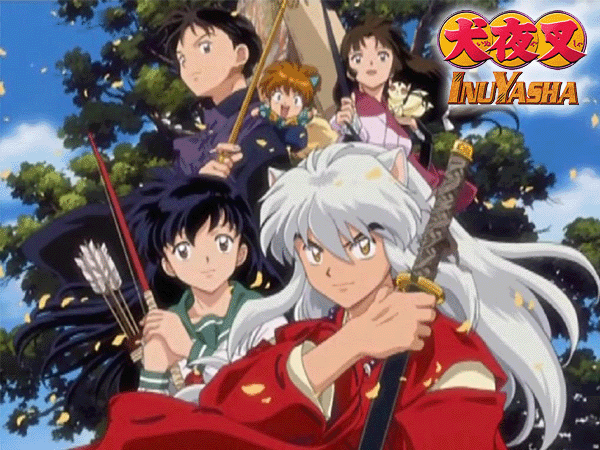 I’ve often thought about what the best anime is for introducing people to the medium. Many anime are great for people who hate anime. But what about those who are curious but find anime strange? What about those who find the tropes of anime and the jokes confusing? What is the best anime for them?
I’ve often thought about what the best anime is for introducing people to the medium. Many anime are great for people who hate anime. But what about those who are curious but find anime strange? What about those who find the tropes of anime and the jokes confusing? What is the best anime for them?
Well, as you can see in the title, it is Inuyasha. I was fortunate to have Inuyasha be among my first experiences of anime, so I am a little biased. However, the series eases its viewers into anime. The series doesn’t have gratuitous fan-service or strange pervert jokes. The pervert jokes the series does have usually deals with Miroku’s mild antics. Inuyasha aslo builds on Japan’s deep and interesting folklore; it serves as a good introduction to the fabric of Japan. In many other anime, this fabric is treated as just a part of the environment. In Inuyasha, it is a part of the monster-of-the-week format, so it is more easily understood. This also provides background for the modern festivals Kagome, the heroine, attends. These festivals appear often in other anime.
The series introduces basic anime character tropes. You have the impulsive hero who is focused on getting stronger in Inuyasha; the hidden-power character in Kagome; the strong tsundere (at least toward Miroku) in Sango; the good-hearted pervert in Miroku; the cute mascot in Shippo; and the conniving life-ruining villain in Naraku. Inuyasha acts as most shonen heroes do when it comes to romance–oblivious and dense. That’s the thing with Inuyasha. Most anime tropes are there, but they are not taken to the extremes most other anime takes them.

For example, there’s the usual see-the-girl-naked-in-the-bath scene common to anime, but it isn’t the focus of an entire episode as it is with many modern shonen stories. Nor does it reoccur that often. Inuyasha isn’t out to see Kagome naked. Even the pervert Miroku doesn’t get into the panty-fetish you see in another anime. Yet, you can see the elements that underpin these modern scenes. It’s a way of weening into anime’s (tired) flavor of humor. Inuyasha does have its own running joke. Inuyasha does something dense or tone-deaf and Kagome orders him to sit (a magical incantation that forces him to the ground) and keeps ordering it until he’s deep inside a crater. Yet, for the most part the anime doesn’t take this gag too far as many others have done, such as Fullmetal Alchemist‘s short jokes. You also won’t see the accidental breast grab or other fan-service based humor in Inuyasha, which allows a new anime watcher to avoid some of the more off-putting aspects found in anime.
The art style is approachable too. Anime has its own distinct visual language and ways of showing a character’s thoughts and emotions. And both have a bit of a learning curve. Also, the style of anime’s designs–the large eyes, small noses, small mouths–take some time to get used to. Now, I know One Piece is among the most popular anime out there, but well, I find the art style hideous. I just can’t get past it. It is expressive, but it is so strange. For many new to the genre, shows like One Piece could be too large of a hurdle. Inuyasha, on the other hand, has run-of-the-mill character designs that most anime use as a foundation. This middle-of-the-road design–not strange like One Piece or personalized like in Clannad–gives new anime watchers a good introduction to how anime approaches design and animation. It gives a middle spectrum that allows beginners to have a basic standard to use as a reference point.
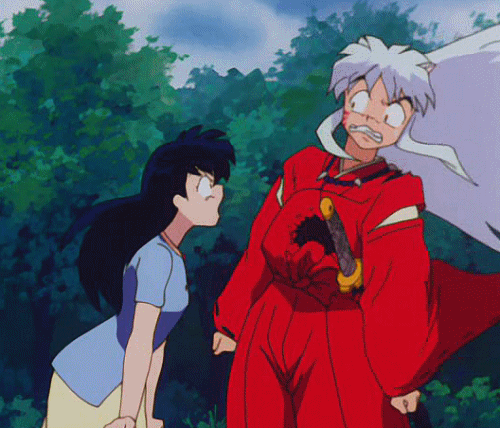
As for the visual language, Inuyasha has some if it–sweat drops and the like–but it isn’t festooned with such symbols. Some anime rely heavily on this visual nomenclature, which is fine for those who are used to it, but for beginners of all ages it can be tough to understand. Now, for those of us who’ve watched anime and read manga for a long time, it can be hard to understand how someone couldn’t understand a sweat drop or beady-eye gaze. However, I see many questions in my search analytics asking what these symbols mean, which is why I wrote several articles decoding them as I understand the symbols. They aren’t readily understood. Beginners have to look these visual words up just as you would have to look up an unfamiliar word in a dictionary. However, it can be a turn-off to have to look up every other word just to understand a sentence. So too with an anime. That’s why Inuyasha works well as an introduction. It punctuates its emotional sentences with a few visual words, but for the most part it relies on more naturalized (at least, as naturalized as a stylized medium like anime gets) expressions to get its point across. It eases the beginner into anime’s language.
Inuyasha introduces anime’s flavor of action, particularly the yelling. Heroes yell their signature attacks as a matter of course. Part of this is a hold over from manga. This helped clarify what was happening across pages overstuffed with action lines and frames. Of course, Inuyasha, as any good hero in anime does, seeks to become stronger. He gains different attacks to yell over the course of the story. Like most anime heroes, both shojo and shonen, he takes this to the level of obsession, even if his motivation–to protect those he cares about–is noble. That protective motivation characterizes most heroes for that matter.

Inuyasha also introduces beginners to Shinto and Buddhist beliefs that shape the background of anime. Kagome’s grandfather, for example, is a priest, and he’s often performing various rituals. Miroku is a Buddhist monk who uses talismans as part of his fighting style. This series treats these as a matter-of-fact, and it also doesn’t get lost in explaining how the exorcisms works. Many modern anime get lost in explaining how their magic systems and spiritual systems work. No so here. But Inuyasha does have many villains explaining their methods and motives. While this is tedious and considered poor writing–diatribes rarely work–for beginners this helps. It also is a common feature of anime and in the James Bond series for that matter.
So why do I think an older anime like Inuyasha is better for beginners than more modern stories like My Hero Academia or the ever-popular One Piece? Well, Inuyasha is a middling anime in the age of its art. It acts as a bridge between modern animation and the animation style of the 1990s and 1980s. The art style of those periods is distinctive (some would say dated). Inuyasha allows beginners to be comfortable with both modern and older styles, opening up a vast range of stories. However, the gap between the glossy modern style and the style of the 1980s is large enough that people who start with the modern may have problems watching the older style. It’s much like how many people today, who grew up on glossy, computer-painted movies, often can’t watch black-and-white films. However, by being stuck in the modern, you miss out on many great stories. It works the same way with anime’s styles.

Inuyasha tends toward the middle range in animation style, story, humor, action, and most other aspects. But it is a good all-around introduction to the medium because of this middle-road approach. It is a longer show, but it’s not so long that the idea of watching it through gives a headache like One Piece and Naruto. The series is by no means perfect, nor will everyone enjoy it.
Beginner anime are almost unnecessary. When I was growing up, anime wasn’t mainstream. Starting in the mid-90s, anime entered the American childhood thanks to Pokemon and the trend continued. Anime itself is more familiar than it was in the past; however, while these child-friendly series introduces the general visual language, they often lack the more specific anime tropes. Inuyasha, among other titles, provides a bridge from these titles to “true” anime. The series allows those who jump into the titles that require some anime fluency a place to land without falling out of the medium altogether.
I’m sure you can think of some other beginner anime. Inuyasha isn’t the only one. However, its middling qualities–art style, visual language use, length, humor–helps create a foundation for those interested in the medium but confused about its conventions. What other anime would you suggest to beginners and why?
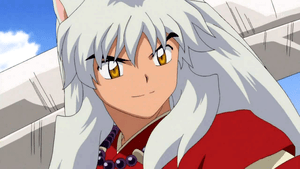
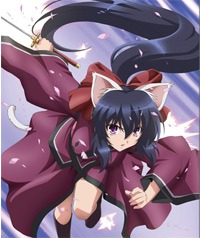
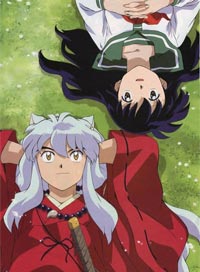
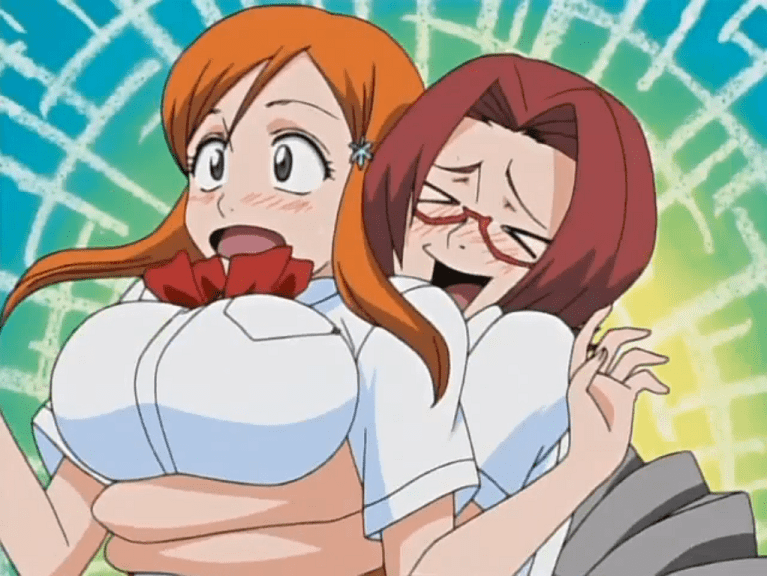
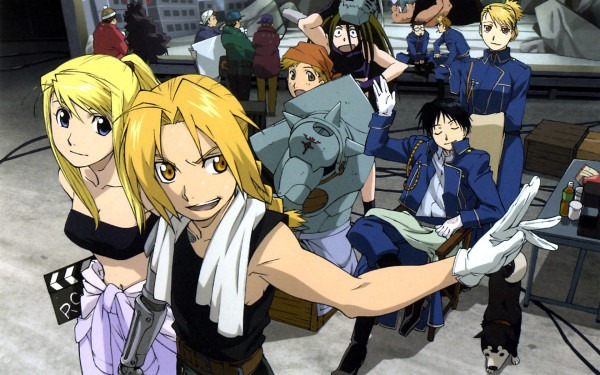
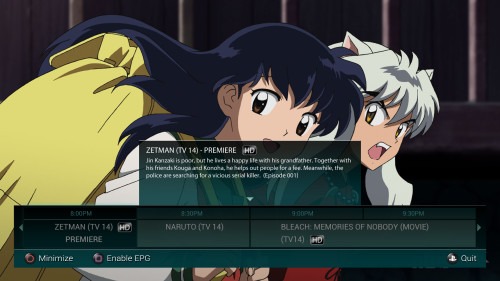
Oh I forgot to mention one thing (this is what I get for copying and pasting my response from Micorsoft Word to your blog before it’s completed). I do like how you went about justifying why Inuyasha would make for a good gateway anime to people. You take into consideration of matters that could potentially get in the way of someone getting into anime, and chose a show many can ease on into as their first anime. It’s something many do not take into consideration when recommending anime from my observation either because they are use to it or much of the tropes never bother and confuse them to begin with (like it was the case for me).
The only matter that would keep me from considering Inuyasha a gateway anime is the length of the story. While the show is not nearly as long as Naruto and One Piece, the anime would still be too long for some people. I recall making contact with people who have trouble watching anime that is hundreds of episodes long. With that said I can see Inuyasha as being a good starting point for those who are interested in giving battle anime a try since it’s not quite as long as most other battle anime. Plus the reason you stated for Inuaysha being a good anime to start with is a plus. To share I would also add Pierrot’s anime adaption of Yoshihiro Togashi’s Yu Yu Hakusho as being a good battle anime to start with as well because it has all or most of the tropes commonly seen in battle anime while having a story that is well paced enough to not have its sagas or story moments overstay their welcome, which is something that cannot be said for some or most battle anime out there. The only exception though would be Yu Yu Hakusho’s tournament saga as late in that saga I was ready to move on, but even then the experience was not nearly as frustrating as it was in battle anime like Dragon Ball Z for instance with concerning the first two major arcs. Plus the story is even shorter compared to the other battle anime out there with only 112 episodes to devote to watching (that is in comparison to Inuyahsha with adding the episodes from the original and Final Act it brings the episode count to a total of 193). In fact it’s perhaps the shortest battle anime out there from my knowledge.
Also while I am not sure if I would consider this a battle anime, I have this feeling that many people regard Bones second attempt of adapting Hiromu Arakawa’s Fullmetal Alchemist, Brotherhood, as a battle anime and I can see why considering it’s more action packed compared to the original (or it could just be me and many people do not see it as a battle anime after all). I can certainly see this as being another good anime to show to anyone who enjoys action.
So that is two anime I would consider as gateways, but like I said it’s only if I was in a situation in which I meet someone who is curious about battle anime, or who just like action in the case of FMA: Brotherhood. When it comes to recommending anime to anyone who is curious enough to give this style of animation a try, or just to anyone who is already into anime and are looking for a new show to watch, I tend to ask people what their favorite genres are working from there. However so far it seems that most of the time when I take this approach the person has no idea what their favorite genre is or they just want me to recommend any show regardless of the genre it’s in.
I feel that I can’t give any anime I would recommend in general at the present as I feel it would take a while to explain my reasoning for choosing certain anime , but I have been thinking of putting together a list of anime that came out in the last decade that can be use as gateways for anyone curious enough about anime to try out. That and from my observation when it comes to anyone thinking of an anime that can be consider a gateway (when they are not choosing anime they personally like without the consideration of others preferences) they tend to choose older shows, and while its understanding why those anime were picked, I think the newer anime that have came out in the past decade deserve to be considered gateways as well. I thought up of criteria an anime must meet for me to consider the show a gateway. Those criteria being the following:
1) The anime must be of good enough quality in terms of storytelling and animation: I would not expect for an anime to be perfect across the board but it must have enough care put into it to be something that is worth watching and sharing with others.
2) The episode count must be around 48 episodes or less: As I said there are people who do not have the patience, as well as time I would add, to devote themselves to watching a show longer than 48 episodes so the anime added would be ones that can be watch in a short enough time, or can be binge within a day or less for those who like binge watching.
3) The anime has to have an ending: This is mainly implying to anime adaptations of manga and light novels. There are those who do not like the idea they have to read the source material to get the rest of the story because they anime adaptation stops at cliff hanger. Unless the anime either completely adapts the entire story from its source material (while keeping to the first two requirements), wraps things up through a film, comes up with its own original ending, or the ending happens to be satisfying enough despite their being more in the source material, the anime would be added.
4) The anime’s story has to have a wide enough appeal that anyone can easily get into: Basically this is similar to how you went about choosing anime to recommend to those who hate anime. Choosing the ones that have less of the common tropes seen in anime. However in my approach I am going to bit lenient in comparison because I do not consider giant robots and cute characters designs to be such major turn offs (especially giant robots. I can understand mecha anime not being for everyone, but not to a degree that it would be consider a major turn off from the style in general). My primary concern would be shows that either feature fan service of the sexual kind or characters behaving in such a moe way (basically the story trying too hard to tap into the moe feeling) in order to appeal to a certain group. Both of those factors have to either be very minimal or non existent in order for the anime to be added. Oh also the anime cannot rely on jokes commonly seen in harem anime in which a protagonist gets into these antics or situations because of a misunderstanding the characters cannot take time to talk through. I never find those jokes funny and I do not see it likely being funny to most who are just getting into anime either.
5) The anime has to be available in an official streaming service: I am not going to send someone to watch anime on a non-official streaming service. Not that I have anything against those streaming service as they are useful when it comes to watching anime that are not available on those official platforms, or when those official streaming service to not do such a good job with handling a particular anime so one has to turn to fansubs to get a better quality, but it’s only fair that one should support the official release as possible.
6) The anime has to have an English dub: As much as it should not matter whether anime has an English dub or not there are those who feel comfortable watching a show in a language they grew up in as well as because they do not like the idea of reading subtitles. Hopefully down the road they will be willing to give an anime a try without relying on an English dub but in the meantime the important thing is to get comfortable watching anime.
I think that is all the requirements I have thought up. Once I have all the anime together that I consider as good gateway shows, I would write what certain group each anime would appeal to. Unlike with other recommendation list it would be handle in a way that one can choose which anime to watch that is align, or comes close to aligning, with their preferences instead of encouraging them to give every anime on the list a try (whether they do will be up to them).
When I considered Inuyasha, I used much of the same criteria behind the scenes. The dub was especially important. I had considered The Last Airbender. Although many argue it isn’t anime, many anime is off-shored to Chinese animation studios. Anime isn’t purely made in Japan anymore. The number of episodes worked against Inuyasha, but the episodic nature of it helps. Your criteria are quite good too. Some of the genres may prove challenging, such as comedy anime. Although Kaguya-sama might be a good one for that category.FMA:Brotherhood, while solid, might have too many anime visual language moments for some beginners. I’ve encountered new anime watchers at my library who found Brotherhood off-putting because of the abrupt comedic transformations. Those aspects of anime need to be weaned toward with some people.
Concerning the perception of anime that is a good point you made. I have come to realize in recent times that how we define anime make less sense when one takes the time to think about reasoning that goes behind it. Relating to your comment for example, I know that back in the 80s many Americana cartoons were outsource to Japanese studios, so by some people standards those cartoons should be consider anime for the fact the Japanese studios had a hand in creating them. Anime is simply a Japanese word for cartoon/animation and Avatar the Last Airbendeer would be consider an anime in Japan being that it’s an animated show.
Concerning my criteria first of all thanks. Secondly I see. I know there are going to be cases in which it’s not going to be clear whether I should consider a particular anime to be a good gateway show. I do know that Kaguya-sama is potentially good candidate and I actually did recommend that show to someone a while back who was new to anime and likes comedy. What is currently keeping it from being added to my list of gateway anime is that show has yet to have an English dub and I since this is an anime base on a manga series that is still continuing it’s up in the air as to how the anime would end on a high enough note or just stop with no conclusion.
Concerning anime visual languages if there are people out there who are that turn off by them, I will try to take that into consideration as much as possible. If not I will at least make a note of that when I put the list together so anyone can have a heads up in advance. I do have one anime in mind that I want to add on to my list which is TRIGGER’S Little Witch Academia. The show has a universal appeal and it seems like it would especially be a good anime for those who like J.K Rowling’s Harry Potter. Plus I have gotten in contact with people who said they got into anime because of Little Witch Academia. However the anime does rely on those so called visual languages (although I would say I feel the visual language in this show is distinct from other anime given the studio behind the show). Do you think there would be people who would be turn off by Little Witch Academia’s visual language?
The fact anime’s style is mimicked by many studios, including Disney, shows show mainstream anime has become. But this also blurs the boundary between what is anime and what is not.
You make a good point about the necessity of dubs. I come across many people who refuse to watch anything subtitled (anime or not), just as people refuse to watch a black and white film. Anime also has this problem among modern fans: they can’t tolerate the old anime style. There’s nothing wrong with that. However, it also prevents them from experiencing many good stories.
From what I’ve seen of Little Witch Academia, I don’t think the visual language is as off-putting because it isn’t as abrupt. It’s exaggerated, but it’s not like characters are suddenly becoming chibi. The young style of the anime might be the biggest turn off for older people who want to ease into anime. In such cases, I recommend Ghost in the Shell: SAC.